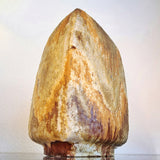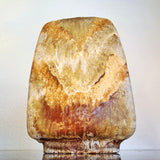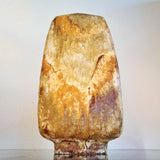

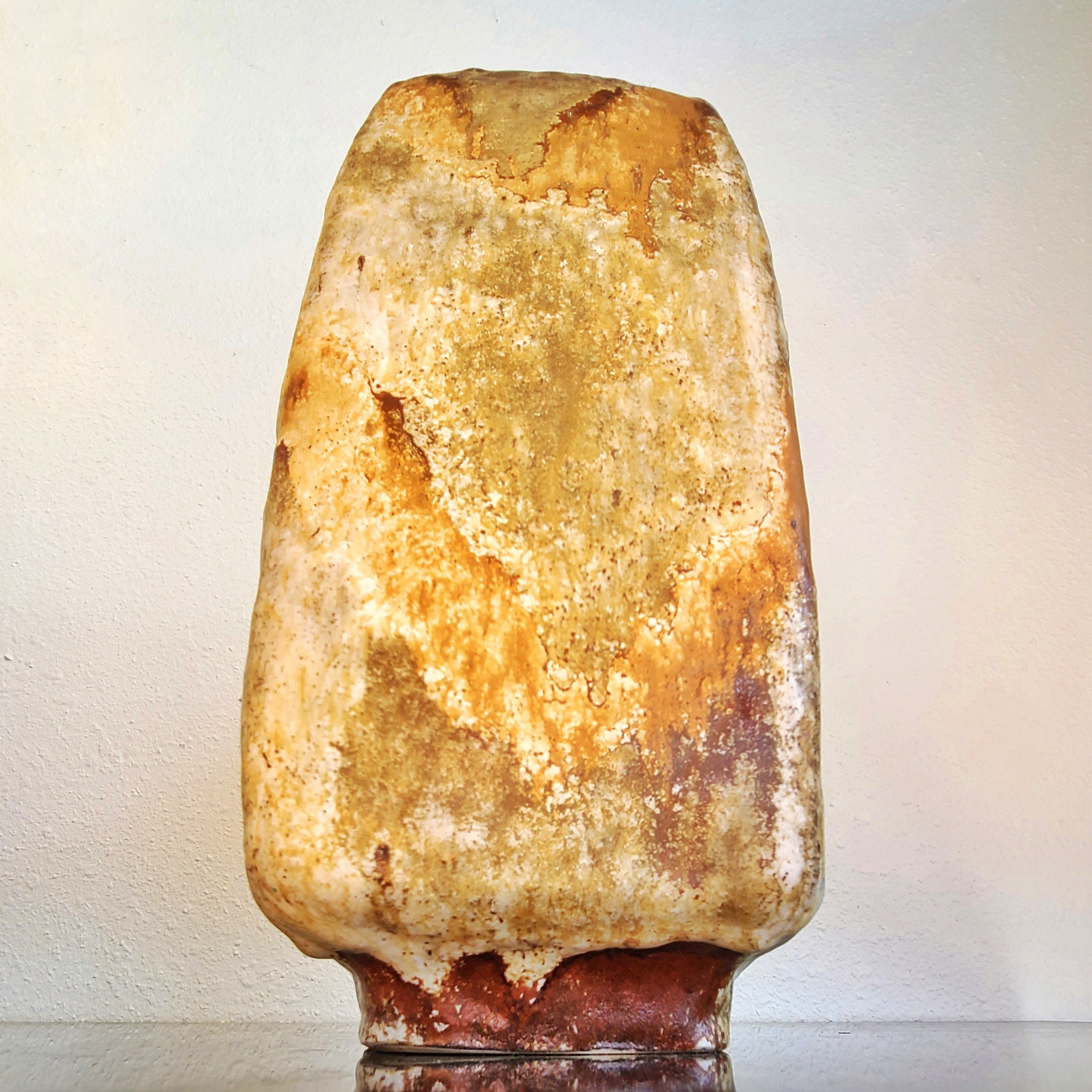







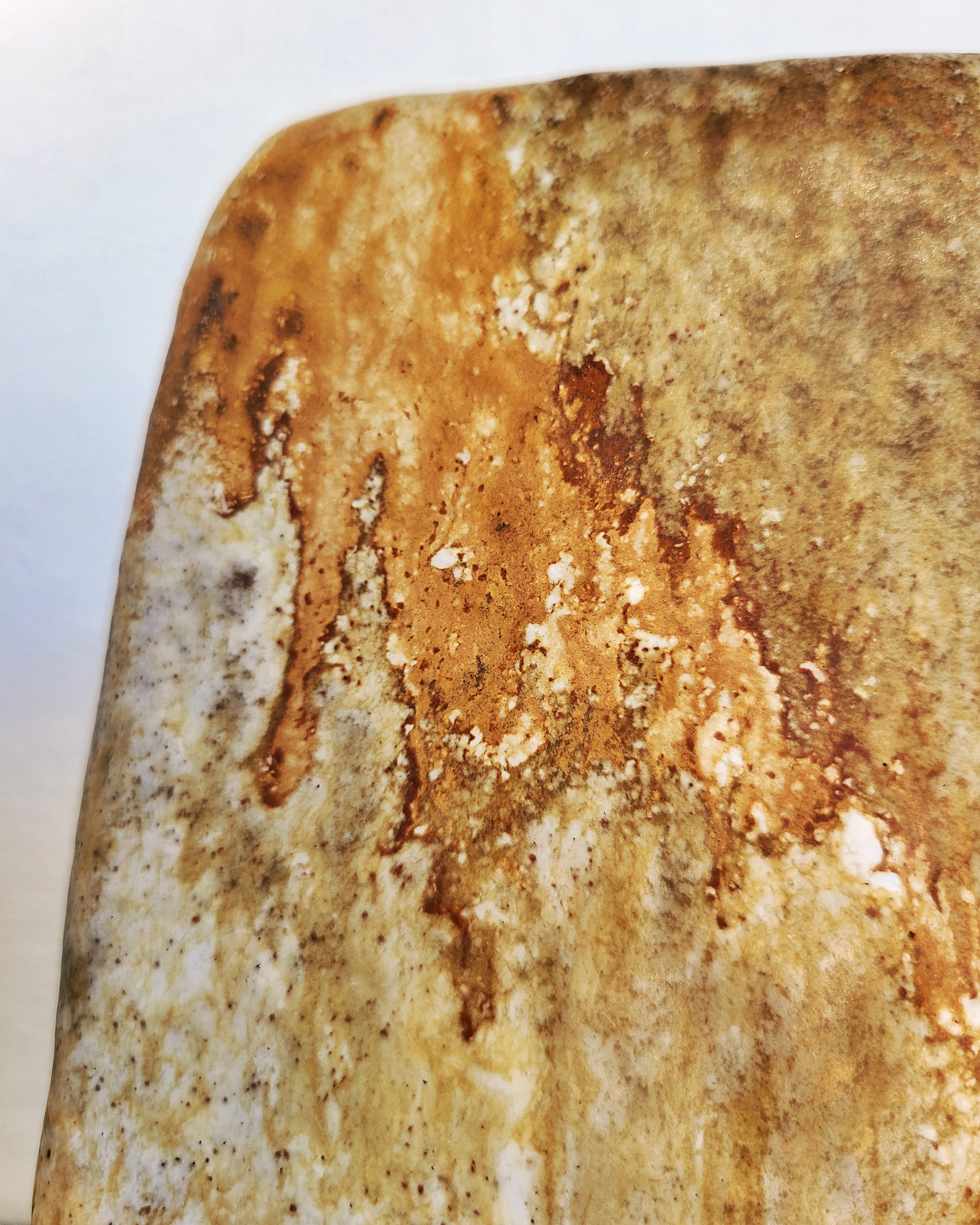

TALL RUSCHA KERAMIK BOX VASE Nr. 873
CONTACT US HERE ABOUT THIS ITEM.
A large RUSCHA KERAMIK biox vase from the '70s in a beautiful striated mix of earthenware tones ranging from a pale khaki to a rich, cinnamon brown, applied using a layered drip technique. Standing nearly a foot tall.
RUSCHA KERAMIK was launched in 1948 when Rudolf Schardt assumed the management of Klein & Schardt, his father Georg's ceramics factory in the town of Rheinbach, located near Bonn in the German state of North Rhine-Westphalia. (RUSCHA is a syllabic abbreviation of his name.) The timing of the re-founding ensured that the company was in a good position to benefit from Germany's post-war growth boom.
RUSCHA KERAMIK became a leading manufacturer during the "golden age" of Western German ceramics and is credited with some of the era's key developments. It produced some very successful and innovative forms and glazes, including the 'Vulcano' décor (Otto Gerharz, 1951)—which heralded the move towards thick, dripping fat-lava glazes—and the iconic no. 313 (Kurt Tschörner, 1954), probably the period's most famous shape. Hans Welling, Adele Bolz, Heinz Siery, and Cilli Wörsdörfer were among other notable designers to work for RUSCHA.
RUSCHA KERAMIK was celebrated for exquisite wall plates, plaques, and tiles—manufactured for both indoor and outdoor applications—as well as its high-quality vases. Specimens from the 1970s will frequently exhibit remarkable lava and volcanic glazes. When RUSCHA closed its factory in 1996, Scheurich acquired many of its designs and molds; distinctive silver RUSCHA labels were sometimes applied to the subsequent production.
Notes on identification: White clay was used practically exclusively. The rare examples made with red-brown clay are thought to date from periods when normal supply sources ran out. Embossed and incised base-numbering was used for vessels. If a vase was made in more than one size, a single digit indicating relative size followed the form number. Low form numbers (< 100) were sometimes preceded by a letter. Like a few other manufacturers, RUSCHA KERAMIK occasionally recycled form numbers, a cause of distress for some collectors. Pieces were never molded with "Germany" or "West Germany." In rare instances, bases were hand-inscribed—less often, painted—with the name RUSCHA and a décor name (these tend to be earlier 1950s items). Where stickers are found they always read "Ruscha Art." Many items were not stickered. Sometimes a retailer's label was applied.
KEY DESIGNERS:
- Otto Gerharz
- Kurt Tschörner
- Hanns Welling
- Adele Bolz
- Heinz Siery
- Cilli Wörsdörfer
DETAILS
Maker – RUSCHA KERAMIK
Production Period/Year – 1970s
Origin – WEST GERMANY
Styles/Movements – MID-CENTURY MODERN
Materials – CERAMIC
Colors – KHAKI, CINNAMON, BURNT ORANGE
Condition – Excellent vintage condition; no damage. May show some signs of previous use.
Dimensions – 7 ¼" W × 5 ¼" D × 11 ¼" H

